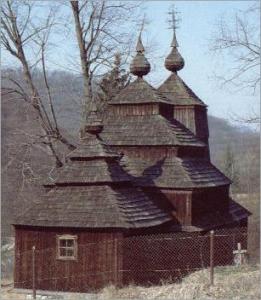Rites of the Catholic Church
In addition to the Latin (or Roman) Rite, the Church has other liturgical traditions which still acknowledge the pope. In Europe the most common of these is the Greek (or Byzantine) Rite among some Slavs. Others are the Armenian, Alexandrian, Antiochian and East Syrian rites. The non-Latin rites are also covered by the concordats, sometimes explicitly. >>
 Where did the Eastern Rite of the Greek Catholic Church come from? The little church of Saint Michael the Archangel tells the story. It consists of three rooms built of logs, each with a tower, one of many such wooden churches in the Carpathian Mountains of north-eastern Slovakia.
Where did the Eastern Rite of the Greek Catholic Church come from? The little church of Saint Michael the Archangel tells the story. It consists of three rooms built of logs, each with a tower, one of many such wooden churches in the Carpathian Mountains of north-eastern Slovakia.
Here, in the 17th century, the Roman Catholic Austro-Hungarian Emperor put his Orthodox Christian subjects under the pope, but treated these Greek Catholics like second-class Catholics. He permitted only Roman Catholic churches to use permanent materials like metal and stone; Greek Catholic churches must be of wood with no nails.
Greek Catholics retain their own code of Canon Law and an Orthodox liturgy which comes from Byzantium. However they are included in their countries' concordats with the Vatican.
E.g., the Eastern (or Byzantine) Rite (Austrian Concordat 1933 Art.1.1 and Slovak Concordat 2000 Art.3.3)
E.g., Slovakia has seven Roman-Rite dioceses and a single Greek-Rite one. Pastorisation and Evangelisation Plan of the Catholic Church in Slovakia 2001 – 2006, 2.1.1.







